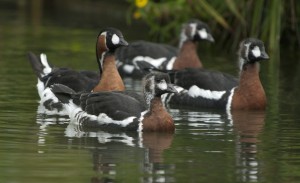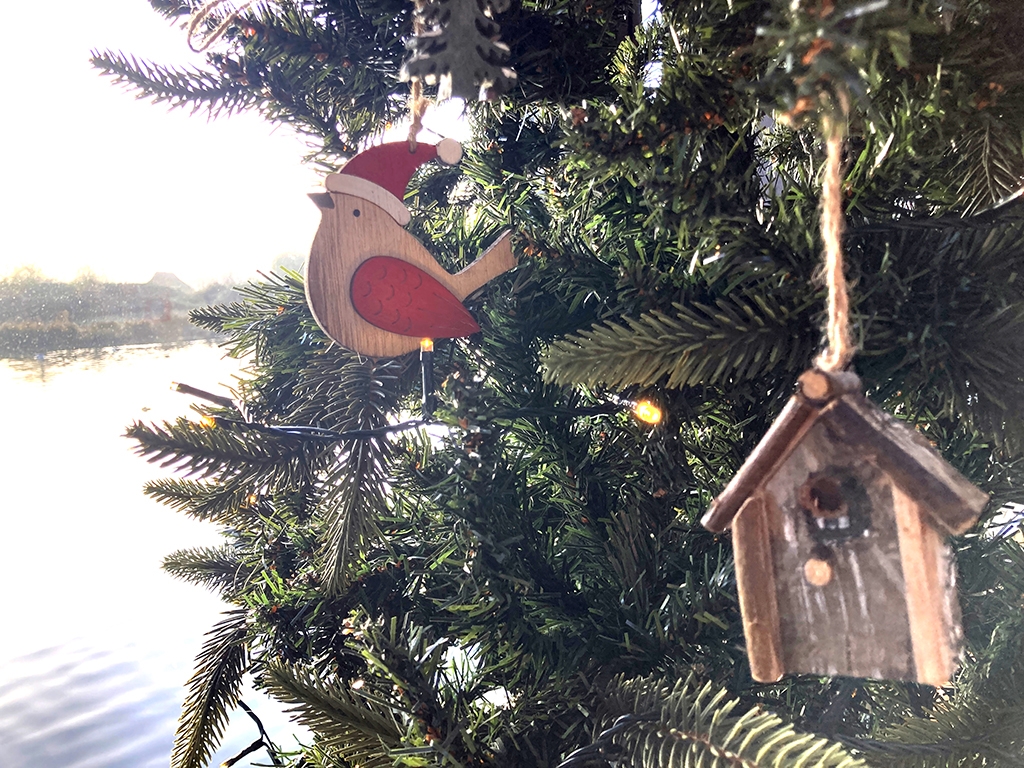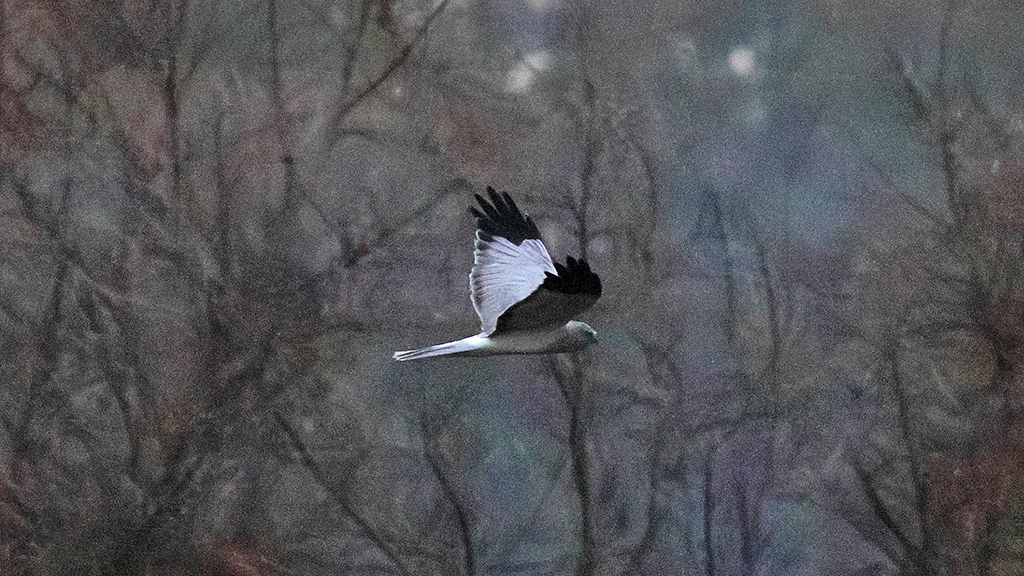Horseshoe nests bring breeding luck for endangered Red-breasted geese
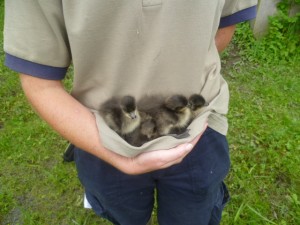
In mid-July four red-breasted goslings hatched at WWT Arundel Wetland Centre inside a new kind of nest.
Grounds supervisor Samantha Halpin designed horseshoe-shaped nest enclosures for the geese made from short sections of wooden log placed on end, to mimic how they would nest on the boggy tundra in arctic Russia.
In the wild, the red-breasted geese flatten a nest space into the centre of a large tussock of grass that screens them from predators and offers a higher vantage point over the flat tundra.
“We let the grasses grow waist-high near the back of their pen and placed the nest enclosures inside this patch.” said Sam, who had previously worked with red-breasted geese at Paignton Zoo before arriving at WWT Arundel in 2011.
“To further encourage breeding this year we balanced the male to female ratio in our exhibit by adding females from other WWT reserves.”
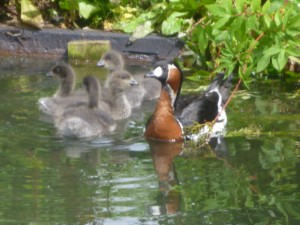
At 10 weeks old, the goslings at WWT Arundel are getting their adult feathers having lost their crown of grey baby fuzz they still had at 6.5 weeks. Grey and fluffy when hatched, the birds develop a chestnut-red head, neck and breast, and smart black and white markings.
An adult red-breasted goose is small and dainty compared to most geese, measuring barely half the size of the more familiar Canada goose seen in the UK.
In 2007, the red-breasted goose was declared endangered by the IUCN (World Conservation Union), meaning that the species now faces extremely high risk of extinction in the wild.
Breeding the geese at Wildfowl & Wetlands Trust centres helps the WWT to develop strategies to apply while working with red-breasted geese in the wild.
The WWT have led on the development of an international action plan for the red-breasted goose and are currently working with local communities and conservation organizations in Bulgaria, Romania and Ukraine to safeguard its winter feeding grounds.
WWT Arundel education staff member Lizzie Pearce recently returned from 2 weeks in Bulgaria, working with education officers from Bulgarian Society for the Protection of Birds (BSPB) to develop school programs around the issues facing the red-breasted goose.
WWT scientists are helping to develop management plans to protect the species’ main winter roost sites at Shabla and Durankulak lakes in north-east Bulgaria and Lake Techirghiol in south-east Romania.
With support from funders, WWT are helping to build observation towers and field research stations. By raising awareness of the red-breasted goose and getting local people actively involved in its conservation, WWT are trying to secure the future of key sites to ensure the survival of the species in the wild.
